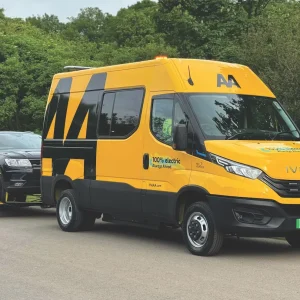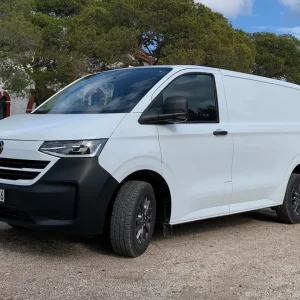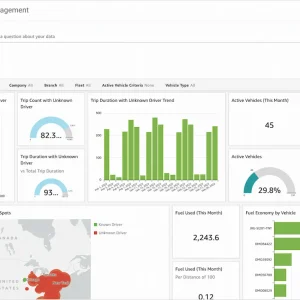Having captured the International Van of the Year award for 2019, followed by What Van?’s LCV of the Year Award in the same year, prizes it shared with its PSA stablemates the Peugeot Partner and Vauxhall Combo, Citroen’s Berlingo has consolidated its position at the forefront of the light van sector by retaining the What Van? Light Van of the Year award for 2020.
This time the Berlingo is joined on the podium not only by the Partner and Combo but also by the Toyota Proace City, which is now built upon the same platform too.
The Berlingo has long been Citroen’s strongest performer in the UK and in 2019 it finished as the ninth best-selling LCV overall, according to the Society of Motor Manufacturers and Traders, with registrations of 13,492 sandwiching the model between its siblings the Partner and Combo. Individually, the PSA trio are breathing down the neck of the UK’s most popular light van, Ford’s Transit Connect, sales of which reached 15,477 in 2019, but cumulatively they are way out in front, by 165%.
Citroen admits that being recognised by What Van? has helped the Berlingo on its way.
“With What Van? occupying a strong position in the LCV media marketplace, retaining the Light Van of the Year award has helped to strengthen [the] new Berlingo van’s reputation and raise its market profile,” says Citroen’s LCV business sales manager, Ed Hickin.
“The van has been very well received by the market in its first year, which has contributed to Citroen UK LCV sales growth of 5% above average growth for the UK LCV market in 2019.”
Citroen’s next best-seller last year was the Relay large van with 7,236 units shifted, followed by the medium-sized Dispatch on 6,355. All made it into the top 20.
Citroen has traditionally performed more strongly with small and local businesses than corporate customers, but the volumes are now more balanced.
“In 2019 the customer split for new Berlingo van [was] roughly 50/50 between SME (46%) and fleet (54%),” Hickin says.
Citroen offers the Berlingo in two sizes, M and XL, and in four trim levels – X, Worker, Enterprise and Driver – and the dominant engine is a 1.5-litre Blue HDi diesel with outputs of 75hp, 100hp and 130hp.
A 1.2-litre Puretech petrol engine is also available but accounts for only a small proportion of sales, Hickin admits.
He says the most popular combination is M length in Enterprise trim with the 75hp powertrain married to the six-speed manual gearbox, with a payload option of 650kg.
However, he adds: “Blue HDi 100 M with ‘1,000’ [kg] payload option is also a popular choice.
“Top specification Driver was the second most popular trim after Enterprise [in 2019]. The long-wheelbase XL variant accounted for 8% of sales.”
Hickin claims the versatile light van is proving to be popular with businesses operating within multiple trades: building contractors, electrical engineers, plumbing and heating engineers, delivery firm couriers, florists, maintenance workers, security staff, domestic appliance engineers, air-conditioning installers, office supplies, shop owners, handymen, bakeries, cleaning and valeting firms, painters and decorators, pest control businesses, butchers, parts suppliers, caterers, dry cleaners, locksmiths and more.

The Citroen Dispatch medium van

The Relay large van
(Continued from page 1) The Berlingo, along with its sibling vans, introduced innovative options to the light van sector, such as an onboard weighing system, to guard against overloading, and a surround-vision camera to improve the driver’s visibility.
Hickin says the better-specified versions are proving attractive to customers, as is demonstrated by the popularity of the Enterprise.
The Berlingo is already available as an electric van, Citroen has supplied one to the government-backed Go Ultra Low scheme this year, but perhaps of even more significance will be the arrival later this year of plug-in derivatives of the Dispatch and Relay, with respective claimed payloads of 1.0t and 1.2t, and load volumes matching diesel equivalents.
“Our estimate is that vans that can offer good range, and uncompromised load space and payload will be the winners when it comes to convincing customers,” Hickin predicts.
He says demand for electric vans will grow as more cities introduce air quality programmes, but cautions: “Support legislation and grant funding will be important factors in electric van acceptance.”
In the short to medium term Citroen expects demand for diesel-powered vans to remain dominant in the market, and the brand, like its competitors, will continue to supply what its customers ask for despite the urgency for manufacturers to find viable alternatives to the internal combustion engine.
“Citroen was one of the first vehicle manufacturers to offer diesel power and has been an early adopter of emissions-reducing technologies such as the diesel particulate filter. The current Euro6.2 diesel range offers very low emissions and fuel consumption,” Hickin points out.
As previously noted, Citroen, as part of the PSA Group, is heavily involved in platform sharing, particularly when it comes to light vans, and with PSA currently in talks with Fiat Chrysler about a merger, it is possible Fiat’s Doblo Cargo could become the next model to join the platform.
So, how does this affect the way Citroen approaches the van market? Hickin claims the individual brands maintain independent sales teams, with each retaining its own focus.
“Citroen has a long-established business sales network for LCVs, which is used to giving quality advice on vehicle specification, funding and other issues relevant to van customers.
Citroen maintains its focus on its customers, not the competition,” he stresses.
He would not be drawn on whether Citroen considers brands such as Ford and Volkswagen as bigger rivals than those with whom it shares platforms.
“We would consider all competitors ripe for conquest,” he comments.
But with so many similar vans to choose from, customer service becomes a crucial selling point. In this respect Hickin claims Citroen is in a strong position because it has an established business sales network. The operation consists of Business Centres, which have two staff members dedicated to vans and are expected to sell up to 1,000 units annually, and Business Active sites that retail up to 100 LCVs a year. These outlets may have an employee dedicated solely to vans but are not obliged to. Nevertheless, customers can be confident they will meet a degree of specialism in vans at the vast majority of dealerships.
“Van customers need confidence in their supplier and the product,” Hickin affirms.
The manufacturer expects it will have 55 Business Centres up and running by the end of 2020, an expansion of 20% year-on-year, according to Hickin.
He adds: “Citroen’s revised Reward Programmes for 2020 means that every Citroen dealer is incentivised to focus on van sales – most sell vans already – which will help local businesses looking for modern reliable vans.”
Hickin says the Reward Programmes will help the network build on the enhanced engagement with van sales it established last year and emphasises that the manufacturer will also be focusing in 2020 on preparing its network for its LCV electrification programme.
To all intents and purposes Citroen is an upwardly mobile brand. It is in a prominent position within the PSA Group and looks set fair to become a jewel in the dynasty’s crown.

Ed Hickin, LCV business sales boss





